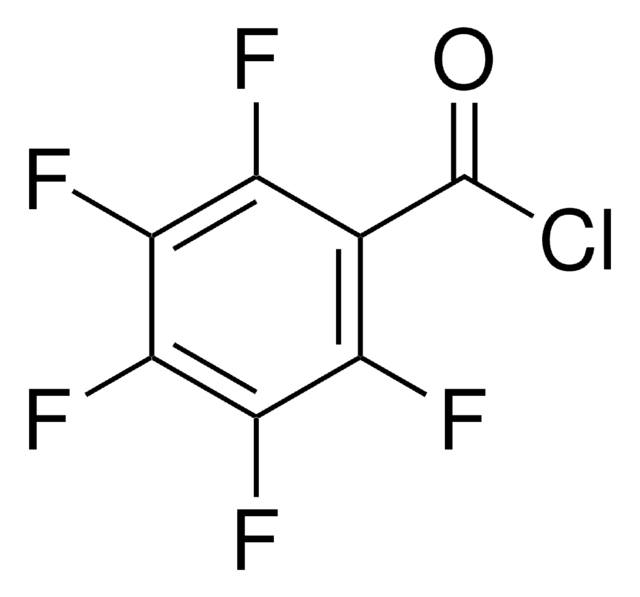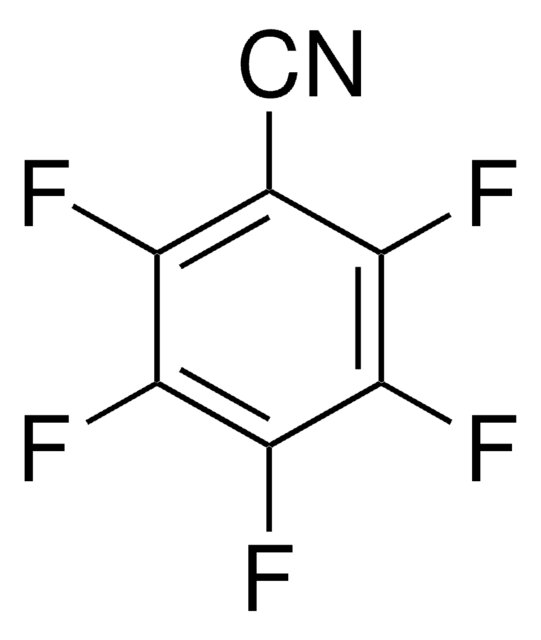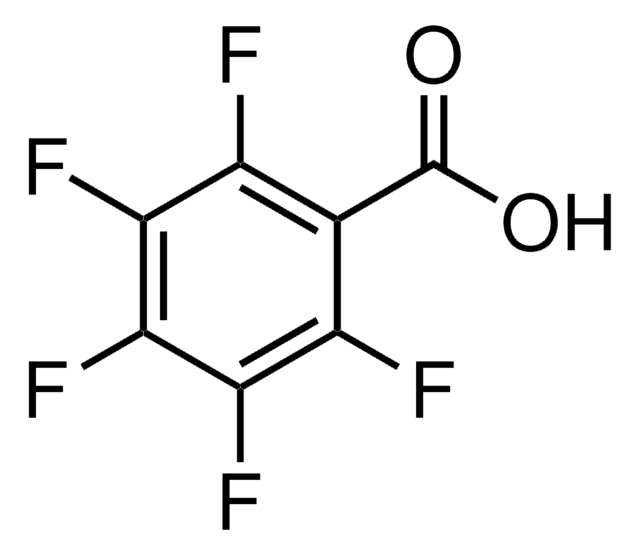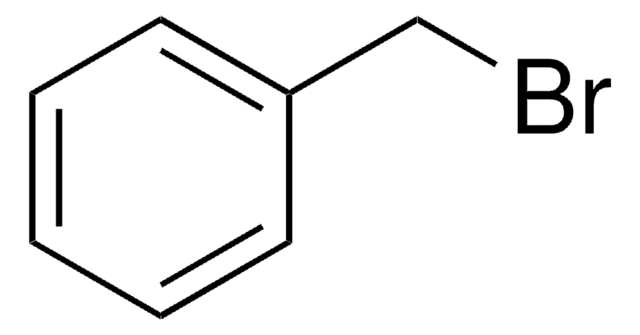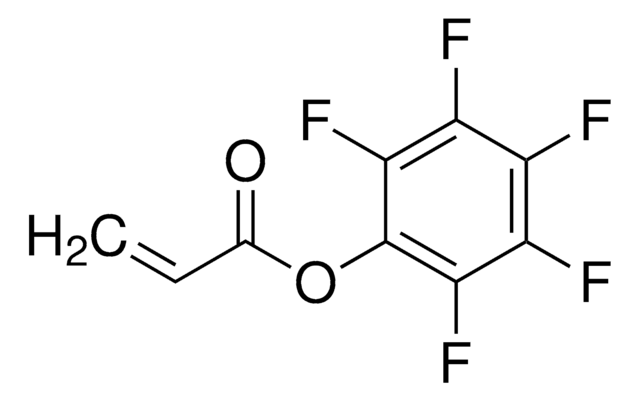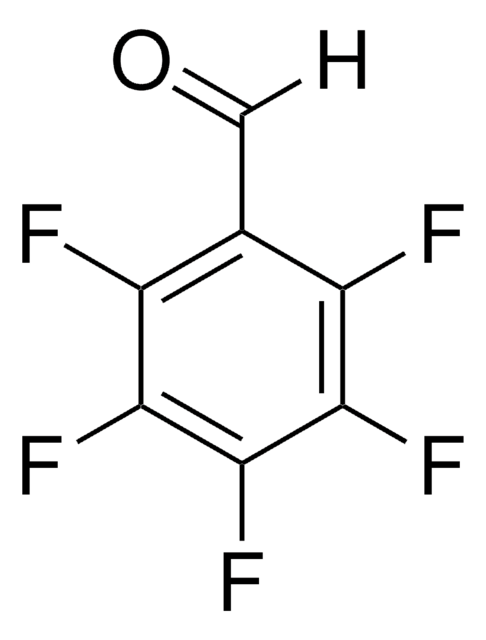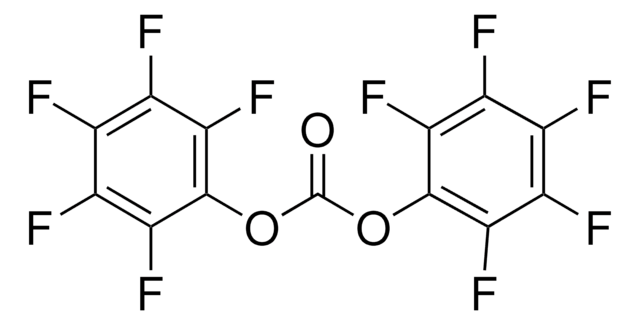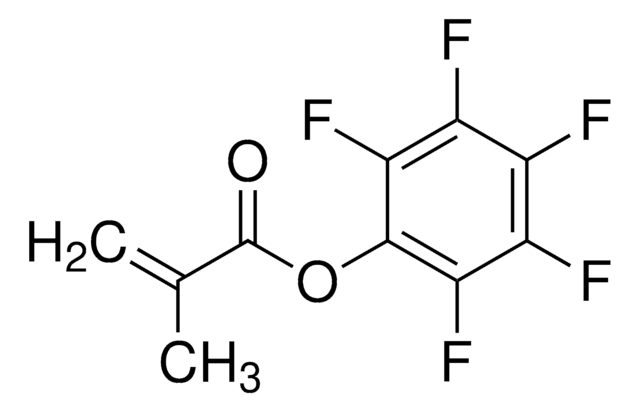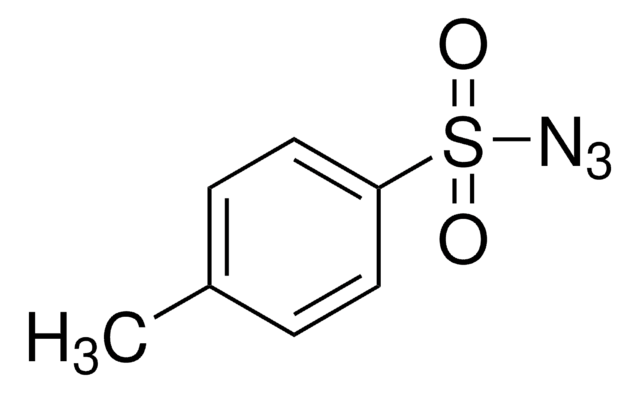303070
Methyl pentafluorobenzoate
99%
Autenticatiper visualizzare i prezzi riservati alla tua organizzazione & contrattuali
About This Item
Formula condensata:
C6F5CO2CH3
Numero CAS:
Peso molecolare:
226.10
Numero MDL:
Codice UNSPSC:
12352100
ID PubChem:
NACRES:
NA.22
Prodotti consigliati
Saggio
99%
Stato
liquid
Indice di rifrazione
n20/D 1.431 (lit.)
Densità
1.532 g/mL at 25 °C (lit.)
Gruppo funzionale
ester
fluoro
Stringa SMILE
COC(=O)c1c(F)c(F)c(F)c(F)c1F
InChI
1S/C8H3F5O2/c1-15-8(14)2-3(9)5(11)7(13)6(12)4(2)10/h1H3
UXJRQNXHCZKHRJ-UHFFFAOYSA-N
Categorie correlate
Applicazioni
Methyl pentafluorobenzoate was used in preparation of photocoupling agent, based on perfluorophenylazide (PFPA)-conjugated polyallylamine, for efficient immobilization of polymers, nanoparticles, graphene and small molecules. It was also used in preparation of photoactive reagent N-hydroxysuccinimide (NHS)-PFPA.
Avvertenze
Warning
Indicazioni di pericolo
Consigli di prudenza
Classi di pericolo
Eye Irrit. 2 - Skin Irrit. 2 - STOT SE 3
Organi bersaglio
Respiratory system
Codice della classe di stoccaggio
10 - Combustible liquids
Classe di pericolosità dell'acqua (WGK)
WGK 3
Punto d’infiammabilità (°F)
172.4 °F - closed cup
Punto d’infiammabilità (°C)
78 °C - closed cup
Dispositivi di protezione individuale
Eyeshields, Gloves, type ABEK (EN14387) respirator filter
Scegli una delle versioni più recenti:
Possiedi già questo prodotto?
I documenti relativi ai prodotti acquistati recentemente sono disponibili nell’Archivio dei documenti.
I clienti hanno visto anche
Huibin Wang et al.
Bioconjugate chemistry, 22(1), 26-32 (2010-12-09)
A universal photochemical method has been established for the immobilization of intact carbohydrates and their analogues, and for the fabrication of carbohydrate microarrays. The method features the use of perfluorophenyl azide (PFPA)-modified substrates and the photochemical reaction of surface azido
Takuya Kubo et al.
Langmuir : the ACS journal of surfaces and colloids, 27(15), 9372-9378 (2011-06-28)
A highly efficient photocoupling agent, based on perfluorophenylazide (PFPA)-conjugated polyallylamine (PAAm), was developed for the efficient immobilization of polymers, nanoparticles, graphene, and small molecules. The conjugate, PAAm-PFPA, was synthesized, and the percentage of the photoactive moiety, PFPA, can be controlled
Marllyn Marques da Silva et al.
Regulatory toxicology and pharmacology : RTP, 103, 282-291 (2019-02-23)
The fibrinolytic enzyme produced by Mucor subtilissimus UCP 1262 was obtained by solid fermentation and purified by ion exchange chromatography using DEAE-Sephadex A50. The enzyme toxicity was evaluated using mammalian cell lineages: HEK-293, J774.A1, Sarcoma-180 and PBMCs which appeared to
Na Kong et al.
Carbohydrate research, 405, 33-38 (2015-03-10)
Carbohydrate-functionalized single-walled carbon nanotubes (SWNTs) were synthesized using microwave-assisted reaction of perfluorophenyl azide with the nanotubes. The results showed that microwave radiation provides a rapid and effective means to covalently attach carbohydrates to SWNTs, producing carbohydrate-SWNT conjugates for biorecognition. The
Il team dei nostri ricercatori vanta grande esperienza in tutte le aree della ricerca quali Life Science, scienza dei materiali, sintesi chimica, cromatografia, discipline analitiche, ecc..
Contatta l'Assistenza Tecnica.